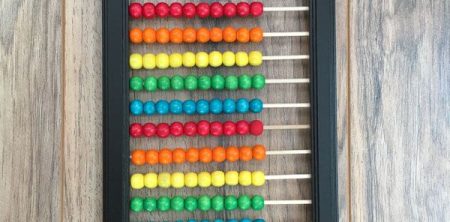Introduction to Math Manipulatives
What Are Math Manipulatives?
Math manipulatives are physical objects that help students understand mathematical concepts through hands-on exploration. These tangible tools bridge the gap between concrete experiences and abstract mathematical thinking, providing a powerful approach to learning that engages multiple senses and learning styles.
The Importance of Hands-On Learning in Mathematics
Mathematics is often perceived as an abstract and challenging subject. Traditional teaching methods that rely solely on lectures and textbook problems can leave many students feeling disconnected and frustrated. Manipulatives offer a transformative approach to mathematical education by:
- Making abstract concepts tangible
- Encouraging active learning
- Supporting different learning styles
- Increasing student engagement
- Developing spatial reasoning skills
- Building mathematical confidence
Theoretical Foundations of Manipulative-Based Learning
Constructivist Learning Theory
The use of manipulatives is deeply rooted in constructivist learning theory, pioneered by educators like Jean Piaget and Jerome Bruner. This approach suggests that learners construct mathematical understanding through active exploration and interaction with physical objects.
Key Principles of Manipulative-Based Learning
- Concrete to Abstract Progression
- Start with physical representations
- Gradually move to pictorial representations
- Finally, transition to abstract symbolic representations
- Sensory Engagement
- Activate multiple sensory pathways
- Enhance memory and understanding
- Create deeper neural connections
Categories of Math Manipulatives
- Counting and Number Sense Manipulatives
Base-10 Blocks
Description: Interlocking cubes representing ones, tens, hundreds, and thousands
Key Concepts:
- Place value
- Addition and subtraction
- Decimal understanding
- Multiplication and division foundations
Counting Chips and Counters
Uses:
- Basic counting skills
- One-to-one correspondence
- Simple addition and subtraction
- Pattern recognition
- Geometric Manipulatives
Pattern Blocks
Characteristics:
- Geometric shapes in various colors
- Regular polygons (triangles, squares, hexagons)
Learning Applications: - Spatial reasoning
- Symmetry exploration
- Fraction understanding
- Geometric pattern creation
Tangrams
Historical Background:
- Ancient Chinese puzzle
- Seven geometric pieces
Mathematical Skills Developed: - Spatial visualization
- Geometric transformation
- Problem-solving
- Geometric composition and decomposition
- Measurement and Spatial Reasoning Tools
Geoboards
Design:
- Pegboard with elastic bands
- Various grid configurations
Educational Value: - Geometric shape construction
- Area and perimeter exploration
- Coordinate system understanding
- Symmetry investigation
Measurement Tools
- Rulers
- Measuring tapes
- Balance scales
- Volume displacement containers
Skill Development:
- Linear measurement
- Weight comparison
- Volume understanding
- Precision and estimation skills
- Algebraic Thinking Manipulatives
Algebra Tiles
Components:
- Rectangular and square tiles
- Representing variables and constants
Conceptual Learning: - Algebraic expression visualization
- Equation solving
- Polynomial manipulation
- Factoring techniques
Integer Chips
Color-Coded Representation:
- Positive and negative integers
- Different colored chips
Learning Objectives: - Integer operations
- Positive and negative number understanding
- Mathematical modeling
Implementing Manipulatives in Different Educational Stages
Early Childhood (Pre-K to 2nd Grade)
Focus Areas:
- Counting skills
- Number recognition
- Basic geometric shapes
- Sensory exploration
Recommended Manipulatives:
- Counting bears
- Linking cubes
- Simple geometric puzzles
- Number lines
Elementary School (3rd to 5th Grade)
Focus Areas:
- Fractions
- Multiplication
- Geometric concepts
- Basic algebraic thinking
Recommended Manipulatives:
- Fraction circles
- Base-10 blocks
- Pattern blocks
- Geoboards
Middle School (6th to 8th Grade)
Focus Areas:
- Pre-algebraic concepts
- Geometric transformations
- Proportional reasoning
- Early algebraic thinking
Recommended Manipulatives:
- Algebra tiles
- Coordinate grid tools
- 3D geometric models
- Integer chips
High School (9th to 12th Grade)
Focus Areas:
- Advanced algebraic concepts
- Trigonometric understanding
- Spatial reasoning
- Complex geometric relationships
Recommended Manipulatives:
- Advanced geometric models
- 3D coordinate systems
- Graphing tools
- Computer-based interactive manipulatives
Designing Effective Manipulative-Based Lessons
Lesson Planning Strategies
- Clear Learning Objectives
- Define specific mathematical goals
- Align manipulative use with curriculum standards
- Structured Exploration
- Provide guided discovery opportunities
- Balance structured instruction with open-ended exploration
- Reflection and Discussion
- Encourage verbal explanation of mathematical thinking
- Create opportunities for peer learning
Common Challenges and Solutions
Challenge: Overreliance on Manipulatives
Solution:
- Gradually reduce manipulative dependency
- Transition to abstract representations
- Use manipulatives as strategic learning tools
Challenge: Management and Organization
Solutions:
- Establish clear handling procedures
- Create designated storage systems
- Teach responsible tool usage
Technology and Digital Manipulatives
Online Manipulative Platforms
- GeoGebra
- National Library of Virtual Manipulatives
- Khan Academy Interactive Tools
Benefits of Digital Manipulatives
- Accessibility
- Instant feedback
- Unlimited exploration
- Cost-effective alternatives
Research and Effectiveness
Empirical Evidence
Multiple studies demonstrate the positive impact of manipulatives:
- Improved conceptual understanding
- Enhanced problem-solving skills
- Increased mathematical confidence
- Better long-term retention of mathematical concepts
Conclusion: The Future of Hands-On Mathematical Learning
Math manipulatives represent a powerful pedagogical approach that transforms mathematical education from a passive to an active learning experience. By providing tangible, interactive tools, educators can help students develop deeper, more intuitive mathematical understanding.
Key Takeaways
- Manipulatives bridge concrete and abstract thinking
- Hands-on learning supports diverse learning styles
- Strategic implementation is crucial for success
- Technology complements traditional manipulative approaches
Recommended Resources
- Professional development workshops
- Mathematical education conferences
- Online manipulative training programs
- Peer-reviewed research publications
Final Thoughts
Embrace manipulatives as dynamic, versatile tools that make mathematics accessible, engaging, and meaningful for learners of all ages and abilities.

